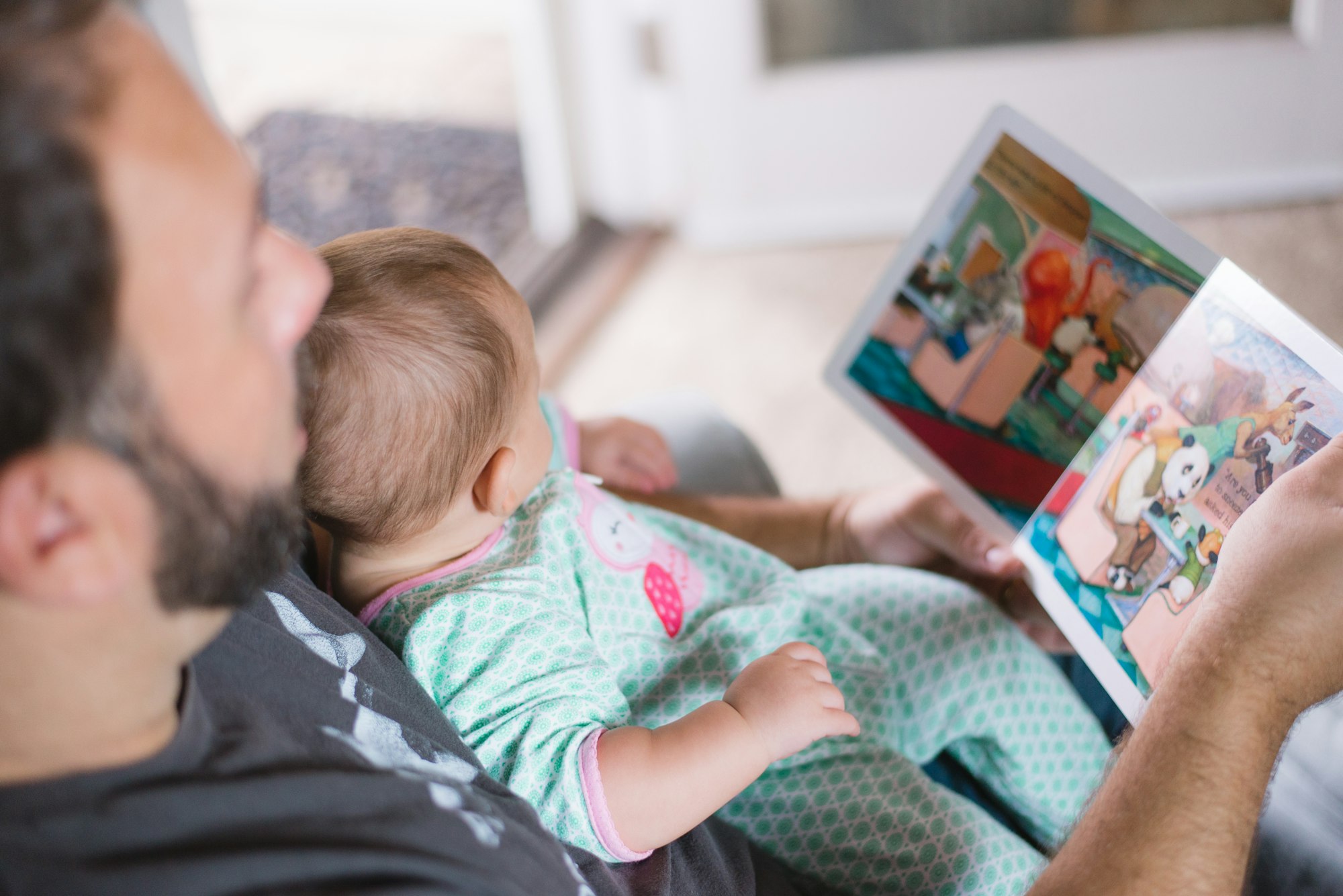How does one help a child develop language in a world heavy with distractions, infinite opinions, and endless advice? Many parents lie awake, pondering whether their words, actions, and even the silent stretches in daily life are enough to help their child develop language in a way that is both natural and effective. You may occasionally notice all those subtle moments—your baby’s gaze, a toddler’s hesitant babbling, a preschooler’s endless why-questions—and wonder, “Am I doing enough? What actually works?” The journey to help your child develop language is neither linear nor uniform; it is a vibrant mosaic of social cues, neural connections, family traditions, and daily rituals. This discussion unpacks medical insights, practical routines, evidence-based techniques, and the kinds of nuanced encouragement that light up children’s linguistic growth—all to help your child develop language, day after unpredictable day. You’ll find tools, approaches, and reassurance to help your child develop language—at their own pace and in their own voice.
The Foundations: What Is Language Development and Why Does It Matter?
Children are not born speaking; instead, every child is equipped with neural pathways eager for stimulation—a neurological canvas awaiting the colors and patterns of daily life. Language acquisition is the intricate progression wherein children master not just individual words, but also the structures that govern communication.
Think of language as a multifaceted toolkit:
- Phonological awareness: Children explore sounds—cooing, then creating syllables.
- Semantic networks: Vocabularies bloom; a “doggy” becomes “the brown dog is barking.”
- Syntax and morphology (how words fit and change): Strings of thought become stories; adjectives, plurals, tenses emerge.
- Pragmatic skills: Conversational dance—knowing when to talk, when to pause, when a glance says everything.
Brain development underpins all these domains. Scientific research underscores the first three years as a period of hypersensitivity, where neural circuits tied to speech and language ignite—a unique window to help your child develop language before pathways prune and specialize.
Real-World Interactions: The Engine of Language Growth
Talking Is a Conversation, Not a Monologue
From day one, your child is ready to interact. Respond to coos and curious stares, narrate your actions during diaper changes or bedtime routines— “Now we zip up your pajamas and sing a song”— and seize every “ordinary” moment as a pocket of meaningful connection. These reciprocal exchanges, sometimes labeled as serve-and-return interactions, anchor the way infants map sound to sense. The science here is unambiguous: frequent exposure to natural language in daily life turbocharges both verbal and nonverbal communication skills.
Listening: The Silent Power
Does it feel awkward to answer babbling or incoherent toddler speech? Listen anyway. When you listen—really listen—you model attentive communication. Pause, maintain eye contact, and echo their early attempts: “You said ‘ba’—do you want the ball?” This patience reassures your child, boosting intrinsic motivation to try, fail, and try again.
Names, Gestures, and Bridging Meaning
Point to objects, name family members, describe what you see (“Look! A bright red apple”). Gestures—waving, nodding, signing “more” or “all done”—let children participate in dialogue before speech fully takes off. Paired with words, these nonverbal cues help your child develop language without the frustration of being unable to speak every thought.
Milestones and Pathways: A Quick Reference
- 0-12 months: Tracking, cooing, gesturing. Understands common words (“Mama,” “bye-bye”).
- 12-24 months: First words pop up, often around 12 months; vocabulary increases, and by 18 months, 50 words are typical. Simple two-word phrases (“More juice”) appear.
- 2-3 years: Vocabulary surges; sentences get fuller. Most strangers can follow their speech by three.
- 3-5 years: Grammatical structures take root, storytelling emerges, and questions multiply.
However, remember: timelines are guides, not absolute rules. Genetics, hearing, and the surrounding environment all influence pacing. If you sense persistent delays in your efforts to help your child develop language, initiate a medical review—early intervention unlocks opportunity, not judgment.
Everyday Opportunities: The Laboratory of Home Life
Reading and Shared Storytelling
Reading aloud together—early, often, with gusto—remains a gold standard. The act of pointing at illustrations, pausing to ask, “What do you think happens next?” or naming objects on the page, builds semantic connections and phonological awareness. Board books, nursery rhymes, and songs layered with gestures fortify memory and foundational grammar.
Play and Song: The Joyful Path to Mastery
“Singing Wheels on the Bus” or playing rhyming games while stacking blocks may seem lighthearted, but these actions generate what linguists call joint attention and improve auditory processing. Word games, tongue-twisters, and playful turn-taking push language boundaries further, especially as you help your child develop language across a broad social-emotional range.
Grocery Stores and Kitchens: Unscripted Classrooms
Everyday settings—whether weighing fruit or stirring soup—teem with vocabulary lessons, sequencing (“First, peel. Next, chop.”), and descriptive challenges (“Let’s find something round and green”). Working together on chores, naming ingredients, or revisiting memories during walks teaches children the rhythm of real conversation.
Limiting Screens: Protecting the Developing Brain
Many voices suggest that a “smart” app or colorful video can help your child develop language faster. Medical research tells a different story. Before age three, the brain’s language-processing areas rely on social-exchange—tracking lip movement, reading facial expressions, and decoding emotional tones. Screens divert this focus, exposing children to passive input not yet interpretable by their sensory systems. Digital exposure prior to this neurological maturity does not help your child develop language—in fact, it can delay meaningful engagement. Choose real-world play; the gains are measurable and lasting.
Recognizing Roadblocks: When Language Stalls
Should your two-year-old use fewer than 50 words or persistently avoid making two-word phrases, or if you struggle to understand their speech past two and a half, consider these red flags. Other signals—limited interest in books, lack of engagement, or trouble following simple commands—warrant discussion with your pediatrician. Speech-language pathologists (SLP) provide assessments that can clarify if a receptive (understanding) or expressive (talking) disorder is present. Early therapy often transforms outcomes.
Common Disorders and Their Meaning
- Articulation disorder: Persistent trouble with sounds (“thun” for “sun”).
- Phonological disorder: Patterned errors that affect whole classes of sounds.
- Expressive language disorder: Difficulty forming sentences or sharing ideas.
- Receptive language disorder: Struggles to comprehend instructions.
- Childhood apraxia: Breakdowns in planning mouth movements.
- Stuttering: Speech flow disruptions.
Each diagnosis brings different paths, but all benefit from a team approach rooted in empathy, expertise, and data-backed interventions.
Creating a Language-Rich Environment
To help your child develop language effectively, home should be a haven of communication—labeled items, accessible books, visual supports like flashcards, and educational toys feed curiosity and build vocabulary. Let your child choose activities, initiate storytelling at meals, and pose open-ended questions (“Which toy would you like next?”) instead of simple yes/no checks. Structure the space so language blooms organically: less instruction, more discovery.
The Role of Parents and Caregivers: Models, Not Perfection
Speak in clear, measured sentences. Expand and gently correct (“I eated” met by “Yes, you ate lunch”). Avoid the trap of overcorrecting—encouragement matters more than precision during most of the early years. Teach emotion words; integrate feelings into your daily talk. Invite cooperative play and respond thoughtfully to every communication attempt; this motivates persistence.
Bilingual and Multilingual Families: Navigating the Research
What if your home brims with two, even three languages? Rest assured: children can acquire multiple languages without confusion. Pediatric research confirms that bilingualism may delay some milestones by a few months, yet overall, these children gain powerful cognitive flexibility and advanced socio-emotional awareness. Stick to natural use—the language that feels most comfortable during play, meals, and routines. Assess progress in both languages. Worried? Seek help from specialists experienced in bilingual development.
Enlisting the Village: Family, Community, and Beyond
You are not the only influence! Grandparents, neighbors, siblings—all contribute new stories, idioms, songs, and vocabulary, each expanding your child’s repertoire. Seek out library groups, story circles, or music classes to multiply communicative experiences. Share your strategies with teachers and relatives to maintain a cohesive approach—consistency matters.
Key Takeaways
- Meaningful, everyday social interaction is the most powerful strategy to help your child develop language—prioritize it over quantity of words spoken.
- Responsive talking, attentive listening, and abundant shared reading form the brain’s architecture for lifelong communication.
- Intentional naming, gestures, and playful routines, both at home and in community spaces, support multiple layers of linguistic development.
- High-quality interaction—patient, reciprocal, affectionate—is exponentially more beneficial than background words or passive entertainment.
- Avoid screens as language-building tools before age three; the scientific consensus supports social input over digital input for brain development.
- Watch for persistent speech or comprehension roadblocks, and partner with pediatric experts early if concerns arise—timely support changes trajectories.
- For children in multilingual homes, consistent, natural exposure in each language supports their development without risk of confusion.
- The involvement of extended family, educators, and community resources amplifies every effort to help your child develop language, making it an organic, collective achievement.
- Reliable support exists for every point on this journey. Medical professionals, speech-language pathologists, and resources like the Heloa app provide tailored advice, developmental checklists, and ongoing encouragement—download it for free, and access personalized health questionnaires and expert tips to help your child develop language confidently and joyfully, every day.
Questions Parents Ask
How can I encourage my child to speak if they seem quiet or less verbal?
It’s completely normal for some children to be more reserved in their speech, especially when they are discovering language at their own pace. You can gently create more opportunities for them by describing daily activities out loud, offering choices (“Would you like the red apple or the green pear?”), and celebrating every attempt—no matter how small. Singing simple songs, engaging in playful imitation games, or looking at picture books together can also inspire your child to express themselves. Remember, there’s no need to pressure—your patience and encouragement are powerful motivators.
What fun activities can boost my child’s language skills at home?
Boosting language doesn’t always mean formal exercises! Everyday moments offer abundant chances: read books together, make up stories, explore rhymes, or play naming games during bath time. Use puppets, point out and name things during walks, or encourage your child to help with simple cooking steps, describing each ingredient. These playful interactions make language a natural and enjoyable part of their world.
At what point should I consult a professional about my child’s language development?
It’s reassuring to know that every child progresses differently, but certain situations may benefit from extra support. If you notice your child rarely attempts to communicate (with words or gestures), struggles to understand simple instructions, or if their speech is much less clear than that of other children their age, consulting a speech-language pathologist can provide tailored guidance. There are gentle, effective ways to support your child’s progress. Most importantly, seeking advice is not a cause for concern but a helpful step towards supporting their unique journey.









